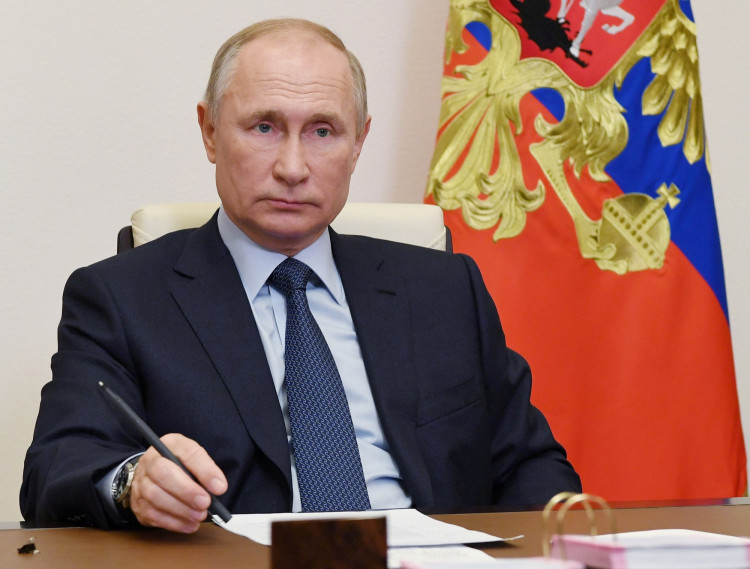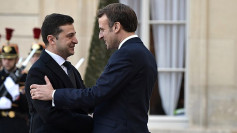Russia launched a massive aerial assault on Ukraine early Friday, deploying 93 missiles and nearly 200 drones in a coordinated attack that left millions scrambling for safety in shelters across the country. The strikes, among the largest since the war began nearly three years ago, primarily targeted Ukraine's energy infrastructure, deepening the humanitarian crisis and testing the resilience of its defense systems.
Ukrainian President Volodymyr Zelensky condemned the assault, accusing Russian President Vladimir Putin of "terrorizing millions of people." Writing on X, formerly Twitter, Zelensky declared, "This is Putin's 'peace plan'-to destroy everything. This is how he wants 'negotiations'-by terrorizing millions of people." He called for a "strong reaction from the world," adding, "Strength that is not afraid of its ability to confront and stop evil is what will bring peace."
Ukraine's air force reported successfully intercepting nearly 90% of the missiles, aided by Western-supplied F-16 fighter jets that have become pivotal in the country's air defense. Despite these efforts, significant damage was inflicted on critical infrastructure. Ukraine's largest private energy company, DTEK, confirmed that its thermal power plants had been "seriously damaged," and rolling blackouts have once again left civilians without electricity, water, or heating in the midst of winter.
The attacks come as Russia has intensified efforts to cripple Ukraine's energy grid, a strategy aimed at demoralizing civilians and disrupting the country's defense manufacturing. Ukraine's Energy Minister Herman Halushchenko vowed that energy workers were doing everything possible to minimize the fallout. The International Atomic Energy Agency (IAEA) reported that five of Ukraine's nine nuclear reactor units experienced reduced power output due to the attacks, further straining the nation's energy supply.
The barrage included cruise missiles, ballistic missiles, and strike drones, with a portion of the weapons aimed at Ukraine's western regions. Moscow claimed the strikes were in retaliation for a recent Ukrainian attack on a Russian airbase using U.S.-supplied Army Tactical Missile Systems (ATACMs). The Russian Defense Ministry described Friday's operation as targeting "critically important fuel and energy facilities in Ukraine that ensure the functioning of the military industrial complex."
This attack follows a similar assault on November 28, when Russia launched about 200 missiles and drones, leaving over a million households without power until emergency crews restored services. Ukrainian officials have warned that Russia is stockpiling cruise and ballistic missiles, suggesting the likelihood of future large-scale strikes.
The escalation has drawn renewed international scrutiny as Ukraine braces for how the conflict might evolve next year. President-elect Donald Trump, set to take office next month, has vowed to end the war but has cast doubt on the future of U.S. military aid to Kyiv. Trump told TIME magazine this week that he opposes Ukraine using U.S.-supplied weapons to target Russian territory, a position Kremlin spokesperson Dmitry Peskov called "positive" for reducing conflict escalation.
Meanwhile, Ukrainian officials are also confronting a challenging ground war. Russian forces continue to advance toward Pokrovsk, a strategically vital city in eastern Ukraine. Military analysts fear that losing Pokrovsk could open the door for a broader Russian offensive in the Donetsk region. To counteract these threats, Ukraine's newly appointed ground forces commander announced plans for a "massive transformation" of troop training, recruitment, and management to address manpower shortages on the front lines.
Putin's forces have capitalized on slow but steady advances in the eastern regions of Ukraine this year. The Russian president has also signaled his willingness to escalate further, unveiling the deployment of advanced weapons, such as the hypersonic Oreshnik missile, which was used in November to strike an industrial facility in Dnipro. U.S. officials have cautioned that the Oreshnik could be deployed again in future strikes.
While Ukraine's allies have provided sophisticated air defense systems, Russia has adapted its strategy by overwhelming defenses with large-scale, coordinated swarms of missiles and drones. These tactics have tested the limits of Ukraine's air defense capabilities, even as Western support has bolstered their effectiveness.






